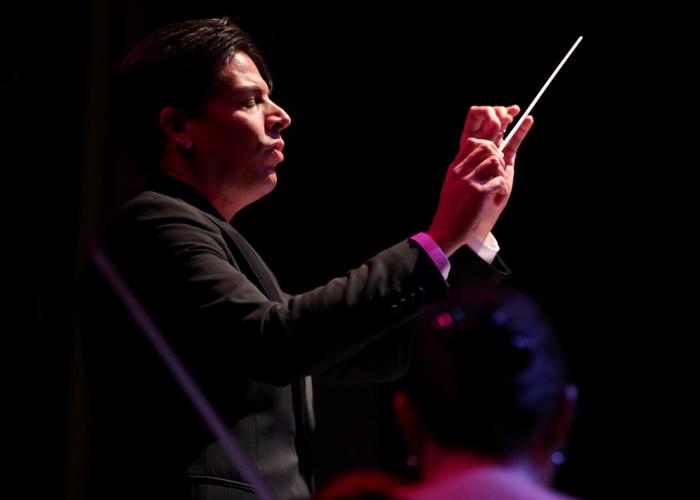Mahler's behemoth Symphony No. 2 "Resurrection" is not something orchestras the size of the Tucson Symphony can program very often.
It requires a big choir, two soloists and nearly 100 musicians to make it worth the effort.
They wait until a special occasion, like when the TSO last performed "Resurrection" with George Hanson at the podium in 2009 to follow up on the historic release of the orchestra's first commercial CD in 2008.
On Friday, March 31, almost 14 years to the day later, Hanson's successor José Luis Gomez revisited the work for no good reason other than to give Tucson a chance to experience a truly remarkable piece of music.
Hanson was in the Linda Ronstadt Music Hall audience for the performance, which was a cornerstone of the second half of the 2023 Tucson Desert Song Festival. Hanson serves as the festival's coordinator.
The work runs around 85 minutes with no intermission, a rollercoaster of pulsating emotions spread over five movements, from the sobering and somber funeral march to the soaring exclamation of the finale that felt like a soul rising from the body and ascending into the clouds.
Gomez's Mahler 2 added a gentleness to the opening movement. The baritone-voiced cellos and bass brought out a sense of brooding that made way for dramatic flashes and sorrowful moments of grief and reflection interrupted by bouts of pounding percussion and crashing cymbals accentuated by horns and winds and the increasingly frenetic strings.
It was no wonder that when the movement ended, Gomez took a breath and wiped sweat from his brow; Mahler is marathon that has a lot of sprinting.
That short breather allowed the choir — numbering more than 100 mixed voices from the TSO Chorus under the direction of Marcela Molina and Benjamin Hansen, the University of Arizona Symphonic Choir directed by Elizabeth Schauer and Hansen's Helios Ensemble — to file into the risers at the back end of the stage. The two soloists, soprano Kelley Nassief and contralto Emily Marvosh, were tucked in next to the twin harps behind the violins.
Reminiscent of Beethoven's Symphony No. 9 "Choral," you don't hear the choir until the end, introduced by the beautifully voiced Marvosh singing the "Urlicht" (Primal Light) to signal the beginning of the finale while the choir enters with a whisper. The voices tiptoed in and out throughout the prolonged orchestral part that includes howling cries of despair and wildly fluctuating mood swings from the horns and percussion with the strings coming in to temper and then disturb the oncoming peace of the finale.
It's in the finale that we get to hear the beauty and power of that choir, complemented by the united voices of Marvosh and Nassief, who seemed to be initially overpowered by the instruments in her brief solo before finding her full voice in the duet.
Gomez and that throng of talented musicians filling the Music Hall stage made a convincing argument Friday night: you shouldn't need an excuse to perform a masterpiece like Mahler's "Resurrection."
The concert repeats at 2 p.m. Sunday, April 2; visit tucsonsymphony.org for tickets.
Tucson Desert Song Festival continues with a recital at 7 p.m. Saturday, April 1, with Grammy-winning Met soprano Angel Blue at UA's Holsclaw, 1017 N. Olive Road in the University of Arizona Fred Fox School of Music. The concert is presented by Arizona Opera and tickets are $35 through tickets.azopera.org.





